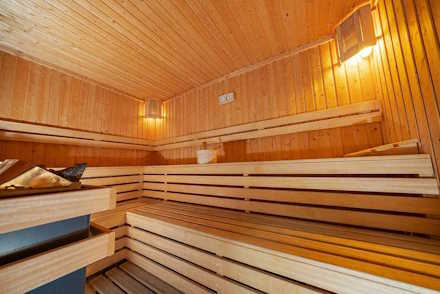The Power of Saunas: Unlocking Post-Workout Recovery

Introduction to Saunas and Their Historical and Cultural Significance
Saunas have been cherished for centuries, offering a blend of relaxation and rejuvenation deeply rooted in numerous cultures. Originating from Finland, the traditional sauna experience has transcended geographic boundaries, becoming a beloved practice worldwide. For fitness enthusiasts, sauna owners, and even those shopping for their first sauna, understanding the historical and cultural essence of saunas can enhance their appreciation and utilization.
General Health Benefits of Sauna
Stepping into the enveloping warmth of a sauna can do wonders for your overall heart health and well-being. Regular sauna sessions are known to contribute significantly to improved cardiovascular health by improving circulation and reducing blood pressure. The intense heat prompts your heart to work harder, which can be akin to physical exercise, thus giving your cardiovascular system a beneficial boost.
Moreover, saunas play a crucial role in detoxification. The high temperatures of the sauna regularly induce sweating, which helps to flush out toxins from the body. This cleansing process leaves you feeling refreshed and invigorated.
For those stressed by the rigors of daily life, the calming atmosphere of a sauna provides a sanctuary for mental and emotional relief. The release of endorphins during a session can reduce stress and anxiety, promoting a state of deep relaxation and improved mood.
From an immune system perspective, heat stress from the regular use of saunas has been shown to enhance its function. Heat exposure increases the production of white blood cells, bolstering your body’s natural defense mechanisms. Infrared saunas have a great history of enhancing health in many ways along with stimulating muscle recovery.
In essence, incorporating sauna sessions into your routine offers a holistic approach to enhancing your health, encompassing physical vitality, mental clarity, and emotional balance
Sauna’s Role in Post-Workout Recovery: Scientific Evidence and Health Benefits

When it comes to post-workout recovery, saunas offer more than just a warm retreat. Scientific studies have shown that regular sauna sessions can significantly improve recovery times and overall mental health too. Here’s how:
Enhanced Muscle Recovery: The heat from the sauna increases blood flow, delivering more oxygen and nutrients to fatigued muscles. This can accelerate repair processes and reduce muscle soreness. Hence it promotes muscle recovery and helps relieve sore muscles.
Detoxification: Sweating in a sauna helps flush out toxins that accumulate during intense workouts, promoting better overall health.
Improved Circulation: The heat induces vasodilation, improving blood flow and cardiovascular function.
Stress Relief: Saunas can reduce levels of cortisol, the stress hormone, helping you unwind after an intense workout.
Inflammation Reduction: Regular sauna sessions have been linked to reduced inflammation, benefiting overall recovery and performance.
Personal Testimonies: How Saunas Have Impacted Fitness Routines

Real-life experiences often speak louder than scientific data. Many fitness enthusiasts have found saunas to be an indispensable part of their recovery routine. Here are a few testimonials:
John’s Story: “After years of intense weightlifting, I struggled with chronic muscle soreness. Incorporating sauna sessions post-workout has been a game-changer. My recovery time has shortened, and I feel more energized for my next session.”
Emily’s Experience: “As a marathon runner, recovery is crucial. Saunas help me relax and ease my muscle tension after long runs. It’s become a ritual I look forward to.”
Mike’s Perspective: “Owning a sauna at home has made all the difference. It’s not just about recovery; it’s a holistic experience that supports my mental well-being too.”
Types of Saunas and Their Unique Benefits for Post-Exercise
There are various types of saunas, each offering unique benefits for post-exercise recovery:
Traditional Finnish Sauna: Known for its dry heat, this type reaches high temperatures (170°F to 190°F) and low humidity, providing intense muscle relaxation.
Infrared Sauna: Uses infrared heaters and infrared light to emit light that is absorbed by the skin, operating at lower temperatures (120°F to 140°F) but offering deep tissue penetration.
Steam Sauna (Steam Room): Combines heat with high humidity, which can be particularly soothing for respiratory health and skin hydration.
Wood-Burning Sauna: Offers a traditional experience with a unique, rustic ambiance and steady heat.
Sauna Safety Tips and Best Practices for Optimal Post-Workout Recovery

While saunas are incredibly beneficial, it’s essential to use them safely:
Hydrate: Always drink plenty of water before and after your sauna session to prevent dehydration.
Time Limit: Keep sessions to 15-20 minutes to avoid overheating. Listen to your body and exit if you feel dizzy or uncomfortable.
Cool Down: Alternate between heat and cold by taking a cool shower or plunge between sauna sessions to boost circulation.
Consult a Doctor: If you have any underlying health conditions, consult with a healthcare provider before using a sauna.
Gradual Integration: Start with shorter sessions and gradually increase the time as your body gets accustomed to the heat.
Conclusion
Incorporating sauna bathing into your post-workout routine can provide numerous health benefits, from weight loss to enhanced muscle recovery to overall relaxation. Whether you’re a seasoned fitness enthusiast or new to the world of saunas, the key is to use them wisely and enjoy the journey towards better health and wellness.
Frequently Asked Questions (FAQ)
How often should I use a sauna session for post-workout recovery?
For most people, engaging in a post-workout sauna session 2-3 times per week post-workout is sufficient to reap the full benefits of a sauna. However, it’s best to listen to your body and adjust frequency based on how you feel.
Can I use a sauna if I have a medical condition?
If you have any medical conditions, it’s crucial to consult your healthcare provider before using a sauna. Conditions such as heart disease, low or high blood pressure, or pregnancy may require special precautions.
What should I wear in the sauna?
It varies based on personal comfort and cultural preferences. In many cases, people wear a towel or a swimsuit. Ensure whatever you wear is comfortable and doesn’t restrict your movement.
Is it okay to exercise right after a sauna session?
It’s generally recommended to use the sauna after a workout, not before. Using a sauna before exercise can lead to dehydration and decrease performance. However, light stretching or yoga might be suitable after a short cool-down.
How long should each sauna post-workout session last?
Start with shorter sessions of 10-15 minutes and gradually increase to 20 minutes as your body acclimates. Always listen to your body and leave the sauna if you start feeling dizzy or uncomfortable.
What are some signs that I should exit the sauna immediately?
If you experience dizziness, lightheadedness, headaches, or any feeling of discomfort, it’s important to exit the sauna or steam rooms immediately and cool down.
Are there any specific types of exercises that benefit the most from sauna sessions?
Saunas can benefit recovery from many types of exercises, but they are particularly helpful after intense cardiovascular workouts, weightlifting, long-distance running, or high-intensity interval training (HIIT). Since the heat of the sauna will result in water weight loss, hydration after long-duration cardio exercise is especially important to avoid stress and help the muscles relax.
How can I maximize the benefits of my sauna sessions?
To maximize the benefits of a sauna after workout, stay hydrated, start with shorter sessions, gradually increase your time, and integrate cooling periods. Combining saunas with a well-rounded recovery routine that includes proper nutrition and rest will also enhance results.
Can regular sauna use improve cardiovascular health?
Yes, regular sauna use has been shown to have many cardiovascular benefits. Heat exposure can enhance blood circulation by expanding blood vessels, lowering blood pressure, and increasing heart rate, similar to moderate exercise. It also helps in reducing arterial stiffness and improving endothelial function, which are key factors in cardiovascular health. However, it’s important to consult with your healthcare professional ensure sauna use is safe and appropriate for your individual health needs.





